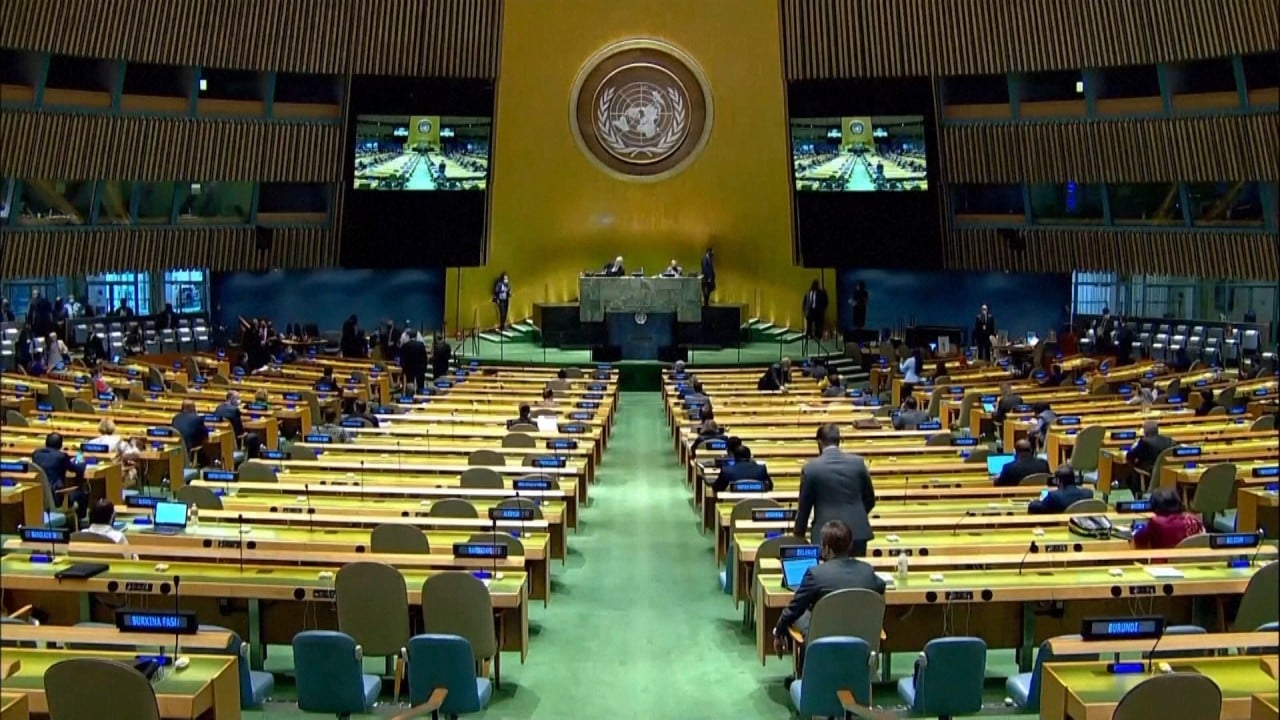
What is China’s plan to meet Xi Jinping’s economic vision for ‘socialist modernisation’ by 2035?
- The fifth plenary session of the Chinese Communist Party’s Central Committee will take place from October 26-29
- China is keen to avoid the so-called middle-income trap despite the impact of the coronavirus and the various tensions with the United States
A healthy economic growth trajectory is expected to be key to plans for how Xi Jinping’s vision for China to “basically achieve socialist modernisation” by 2035 will be laid out at a key meeting in late October.
Xi’s overriding goal was first uttered in 2017 without specifics, but the fifth plenary session of the Chinese Communist Party’s Central Committee is expected to provide more details about the Chinese leader’s vision and the general approach the government will take to achieve it.
A key assumption ahead of the meeting, which will take place between October 26-29, is that China will maintain a healthy economic growth trajectory so that the country can escape the middle-income trap.
The so-called middle income trap is a development stage where a country attains a certain level of income but then stagnates and remains at the same level because it cannot progress from low-cost manufacturing into hi-technology industries.
While so far no ‘common front’ towards China has been formed, this may still happen in coming years
The coronavirus has already proven to be a blip rather than a reversal in China’s growth story, with achieving the goals for 2035 set to serve as a stepping stone for China to become a “modernised socialist country” by 2049, when the People‘s Republic of China will celebrate its 100th anniversary.
Xi said in a speech to political advisers in May that China will face “a more unstable and uncertain environment” in the near future, but that it can continue thriving thanks to its huge production capabilities, massive domestic market of over 400 million middle-income consumers and domestic investment potential from continued urbanisation.
Fuqiang, or making China a rich and powerful country, remains the central piece of Beijing’s vision, although Xi has added fairness and green development to the mix.
But China’s growth prospects will be affected by worsening external relationships, partly because of resistance to Beijing’s insistence on the primacy of its party-state system, including adherence to Communist Party leadership in all key sectors of the economy.
“While so far no ‘common front’ towards China has been formed, this may still happen in coming years,” Kuijs said. “The absence of a common position among developed countries is largely because of the current US government’s inclination to ‘go it alone’.”
Xi, who is rallying the party and the country to chase the Chinese dream of great national rejuvenation, has said China will not yield any ideological ground to “western values” and that the Communist Party leadership must not be compromised in its quest for national strength.
My worry is that if China comes up short in terms of economic growth … it will become more nationalistic and more brittle
“All types of hostile forces both at home and abroad have always tried to force our party to change its banner and to give up the surname – it is essentially an attempt to force us to give up our belief in Marxism, socialism and communism,” Xi said in a 2015 speech that was only published in 2019.
But experiences of “socialism practices” in other parts of the world prove that a Marxist political party will “collapse and fall apart” once it gives up belief in Marxism, socialism and communism, Xi added.
“Some people, including some comrades throughout our party, didn’t see the trick and argue that ‘western universal values’ have gone through centuries and why can‘t we accept them? These people have unconsciously become propagandists for Western capitalism ideology,” Xi said in comments republished last month in a new book containing a collection of excerpts from speeches focusing on the risks and challenges that China faces.

03:02
Trump and Xi trade barbs over Covid-19 as world leaders voice fears at UN’s 75th General Assembly
George Magnus, a research associate at the China Centre at Oxford University, said the strategy is “in effect decoupling for a new era” as China’s external environment will be “radically different” compared to between 1980 and 2010 when the US-led western world welcomed China’s economic rise.
The government’s plan to achieve its China’s 2035 vision will include “more traffic lights … than route maps” and it remains “questionable” whether China will be the world’s largest economy before 2035, Magnus added.
“It seems that Xi Jinping’s China is doubling down on traditional methods of state enterprises and autocratic and centralised control,” Magnus said. “My worry is that if China comes up short in terms of economic growth … it will become more nationalistic and more brittle. Indeed, we can already see this emerging now.”
At the same time, Chinese ministries and local governments are rushing to announce their own blueprints for 2035, fleshing out Xi’s strategic goal.
Beijing is presenting itself as “an important display window for China’s cultural confidence and inclusiveness” and “a hub for China to participate in global governance” by 2035, while Shanghai plans to make one of its new economic districts “a special economic zone with powerful global influence and international competitiveness”.
Shenzhen has drafted a plan to make the city bicycle-friendly and make cycling the preferred method of transport for its commuters, while the tropical island province of Hainan is positioning itself to become a world-class free trade hub by 2035.
China’s quality administration has also produced a 2035 plan as Beijing seeks to lead the way in emerging technologies from 5G communication to artificial intelligence.

